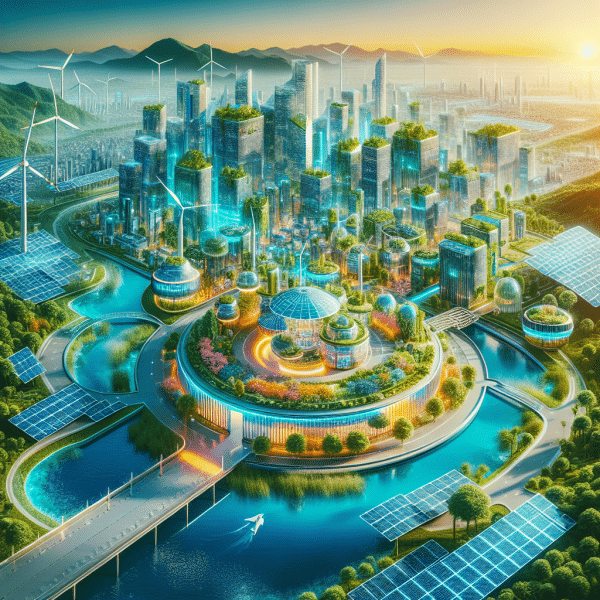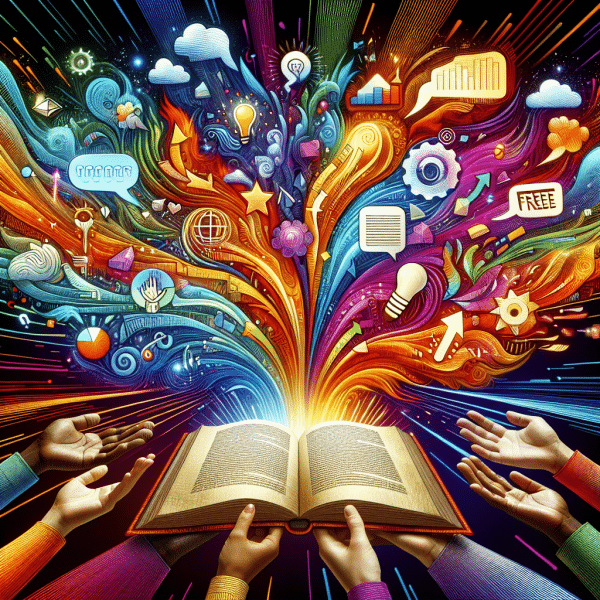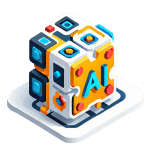AI Artistry Unleashed
Unlocking AI Tools for Digital Design

Introduction
In the realm of digital art and design, the integration of artificial intelligence (AI) has opened up a world of possibilities. The goal of this report is to explore how unlocking AI tools can enhance creativity and efficiency in digital art creation. By harnessing the power of AI, artists and designers can push the boundaries of their work, unleashing new levels of innovation and inspiration.
However, despite the immense potential AI offers, there are complications that may arise in achieving the goal of enhancing creativity and efficiency. These complications could stem from a lack of understanding of AI technology, limitations in current AI tools, or challenges in integrating AI seamlessly into the creative process. It is crucial to acknowledge these potential roadblocks in order to navigate them effectively and truly harness the transformative power of AI in digital art creation.
As we delve into the complexities and possibilities of AI in digital design, we aim to provide insights and perspectives that will guide individuals looking to use AI in their creative endeavors. By understanding the challenges and opportunities that come with unlocking AI tools, artists and designers can elevate their craft and explore new frontiers in digital art creation.
Artificial Intelligence (AI) tools have revolutionized the way digital artists create and design. By incorporating AI into digital art creation, individuals can enhance their creativity and efficiency significantly. These tools utilize algorithms and machine learning to assist artists in generating unique and innovative artwork.
AI tools in digital design can be classified into various categories, each serving a specific purpose in the creative process. From generating color palettes to creating complex patterns and textures, AI tools offer a wide range of functionalities that can streamline the design process and inspire artistic innovation.
One of the key benefits of using AI tools in digital art is the ability to explore new ideas and concepts quickly. These tools can analyze vast amounts of data and provide artists with suggestions and recommendations that can spark creativity and push boundaries. By leveraging AI technology, artists can break free from traditional design constraints and explore new possibilities in their artwork.
Furthermore, AI tools can significantly improve efficiency in digital art creation by automating repetitive tasks and providing intelligent solutions to common design challenges. By delegating mundane tasks to AI algorithms, artists can focus more on the creative aspects of their work and bring their artistic vision to life more effectively.
As we delve deeper into this lesson, we will explore the various AI tools available for digital design and how they can be leveraged to enhance creativity and efficiency in the digital art creation process.
One of the most exciting developments in digital art creation is the use of AI-powered photo editing software. These tools can help artists enhance their creativity and efficiency by offering advanced features and automation capabilities.
AI-powered photo editing software utilizes machine learning algorithms to analyze images, recognize patterns, and make intelligent adjustments. This can save artists valuable time by automating repetitive tasks and offering suggestions for creative enhancements.
Some popular AI-powered photo editing software options include Adobe Photoshop with AI features, such as content-aware fill and subject selection. Additionally, tools like Luminar AI and Topaz Gigapixel AI offer advanced AI capabilities for enhancing and transforming digital images.
By exploring AI-powered photo editing software, digital artists can unlock a new level of creativity and efficiency in their workflow. These tools can help users experiment with new techniques, enhance images with precision, and ultimately push the boundaries of digital art creation.
Utilizing AI for Generating Artistic Ideas
Artificial Intelligence (AI) can be a powerful tool for enhancing creativity and efficiency in digital art creation. One way to leverage AI in this process is by utilizing AI algorithms that can generate artistic ideas. These algorithms are capable of analyzing existing artwork, identifying patterns, and suggesting new concepts based on the input provided.
When looking to use AI for generating artistic ideas, there are several ways to approach this. One common approach is to use AI-powered tools that can analyze a collection of images or artworks and generate new ideas based on the styles, colors, and compositions found in the input data. By utilizing these tools, artists can quickly explore a wide range of possibilities and find inspiration for their own creations.
Another way to utilize AI for generating artistic ideas is through the use of generative adversarial networks (GANs). GANs are a type of AI model that consists of two neural networks – a generator and a discriminator – that work together to create new content. Artists can use GANs to generate unique and original artwork by inputting parameters such as style, color palette, or theme, and letting the model create new ideas based on these inputs.
By incorporating AI tools for generating artistic ideas into your digital art creation process, you can not only enhance your creativity but also improve your efficiency by quickly exploring new concepts and inspirations. Experimenting with different AI algorithms and tools can help you discover new ways to approach your artwork and push the boundaries of your creativity.
Enhancing Workflow Efficiency with AI Tools
When it comes to digital art creation, efficiency plays a crucial role in maximizing productivity and creativity. AI tools can significantly enhance your workflow efficiency by automating repetitive tasks and providing intelligent suggestions to streamline your creative process.
One key way AI tools can help is by automating tasks such as image resizing, color correction, and background removal. Instead of spending hours on these mundane tasks, AI algorithms can quickly and accurately handle them, allowing you to focus on the more creative aspects of your work.
Furthermore, AI tools can analyze your design preferences and suggest relevant resources, such as color palettes, font styles, or composition ideas. By providing these intelligent recommendations, AI can inspire new creative directions and help you overcome creative blocks.
Collaborating with AI tools can also speed up the iteration process in digital art creation. By using AI-powered tools for generating variations of your design or exploring different styles, you can quickly evaluate multiple options and iterate on your work more efficiently.
By harnessing the power of AI tools in your digital art creation process, you can boost your creativity, improve your workflow efficiency, and ultimately achieve more impactful and visually stunning results.
Now that you have learned about the potential of AI tools in digital art creation, it's time to put that knowledge into practice. In this hands-on section, we will explore how to use AI to enhance your creativity and efficiency in digital art.
One popular AI tool for digital art creation is Adobe Sensei, which offers features like image recognition, automatic colorization, and even style transfer. To start, open your preferred digital art software and import the image you want to work on.
Begin by experimenting with Adobe Sensei's image recognition capabilities. Let the AI analyze your image and suggest improvements or alterations based on its understanding of the content. This can spark new ideas and creative directions for your artwork.
Next, try out the automatic colorization feature. Let the AI suggest color palettes or fill in areas of your artwork with colors that complement your existing palette. This can save you time and effort, allowing you to focus on other aspects of your creation.
Finally, explore the style transfer functionality. This feature allows you to apply the artistic style of a reference image to your own artwork. Experiment with different styles and see how they transform your piece, adding a unique flair to your digital art.
Remember, the key to mastering AI tools in digital art is practice. Take the time to experiment, play around with different features, and incorporate AI into your creative process. Embracing AI can not only enhance your creativity but also make your digital art workflow more efficient and streamlined.
Enhancing Creativity and Efficiency in Digital Art Creation
As we wrap up this report on unlocking AI tools for digital design, it is crucial to emphasize the ultimate goal of enhancing creativity and efficiency in digital art creation. By harnessing the power of AI, individuals in the digital art industry can unlock a world of possibilities, pushing boundaries and exploring new realms of creativity.
Remember, the future of digital art lies in the hands of those who are willing to embrace innovation and leverage AI tools to their advantage. By incorporating AI into your digital design workflow, you can streamline processes, generate new ideas, and achieve breathtaking results that were once thought impossible.
If you found this report insightful and wish to delve deeper into the world of unlocking AI tools for digital design, I encourage you to review the full report for a comprehensive understanding of the topic. Additionally, consider exploring an online course dedicated to the subject, where you can gain hands-on experience and further expand your knowledge.
Let us continue to push the boundaries of digital art and unlock the full potential of AI tools to revolutionize the way we create and express ourselves in the digital realm. The future is bright for those who dare to innovate and embrace the transformative power of AI in digital design.
Bonus:

Essential AI Tools Checklist for Digital Design
Selecting the Right AI Tool
- Define Your Needs: Identify the specific tasks or goals you want to achieve with AI.
- Research Tools: Explore different AI tools and their capabilities to find the best fit.
- Try Free Versions: Take advantage of free trials or versions to test out the tools before committing.
Understanding AI Algorithms
- Learn the Basics: Familiarize yourself with key AI concepts like machine learning, neural networks, and deep learning.
- Study Tool Features: Understand how each tool processes and manipulates data for design tasks.
- Join Communities: Engage with online forums and user communities to share insights and learn from others.
Customizing AI Outputs
- Experiment with Settings: Adjust the settings and parameters of AI tools to suit your design style.
- Combine Techniques: Use multiple AI tools together to achieve unique and personalized results.
- Seek Feedback: Share your AI-enhanced designs with peers or clients to gather constructive feedback.
Integrating AI into Your Workflow
- Start Small: Begin with simple projects to build your confidence and understanding of AI tools.
- Automate Repetitive Tasks: Use AI to handle time-consuming tasks like image enhancement and pattern generation.
- Expand Gradually: Gradually incorporate AI into more complex projects as you become more comfortable with the technology.
Ensuring Ethical Use
- Monitor Bias: Regularly review the outputs of AI tools to identify and correct any biases.
- Be Transparent: Clearly communicate when AI is used in your design process to build trust with your audience.
- Prioritize Security: Choose reputable AI tools that prioritize data security and respect user privacy.
